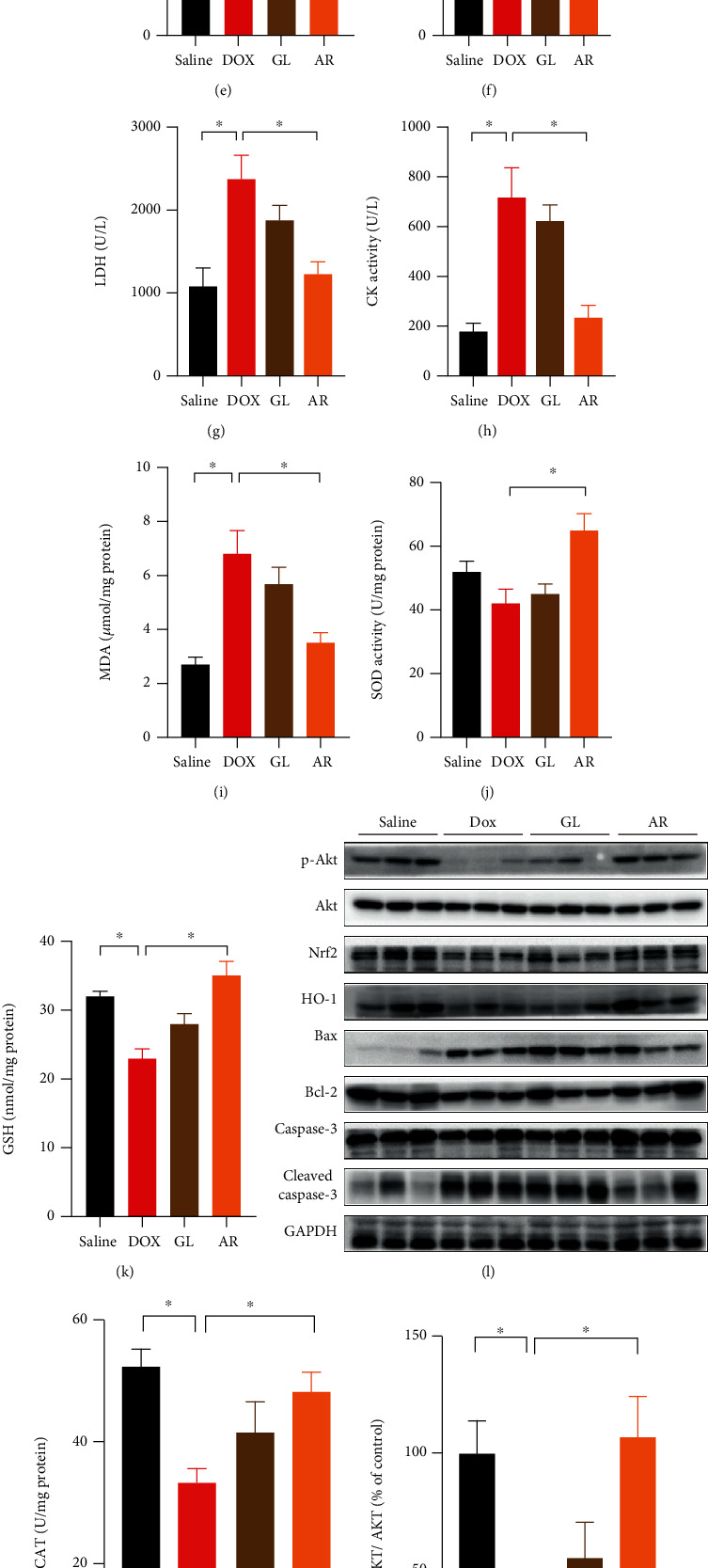Figure 7.

Effect of AR and GL extracts on Dox-induced cardiotoxicity in mice. Mice received AR (250 mg/kg) or GL (250 mg/kg) by oral gavage for 28 consecutive days. From day 13, the mice received intraperitoneal injection of Dox (5 mg/kg) every 3 days until a cumulative 25-mg/kg dose of Dox was reached that induced cardiotoxicity. Mice receiving vehicle (instead of AR or GL extract) and saline (instead of Dox) served as the control group. (a) Body weight was monitored every other day during the experimental period. (b) The ratio of heart weight to body weight was determined at the end of the experiment. (c) Kaplan-Meier survival curves for each group (n = 8) were monitored during the experiment. Statistical differences (p < 0.01) were calculated using the log-rank test. (d) Cardiac function in mice was evaluated as shown by echocardiography. Quantitative analysis of (e) left ventricular fractional shortening (LVFS) and (f) left ventricular ejection fraction (LVEF). (g) LDH and (h) CK activity in mouse serum was measured and quantified. (i) MDA, (j) SOD, (k) GSH, and (m) CAT levels in heart tissues were quantified. (l) Expression levels of p-Akt, Akt, total Nrf2, HO-1, Bax, Bcl-2, caspase-3, cleaved caspase-3, and GAPDH (as internal reference) in heart tissues were detected using western blot analysis. Quantitative analysis of the ratio of protein expression of (n) p-Akt/Akt, (o) Nrf2/GAPDH, (p) HO-1/GAPDH, (q) Bax/Bcl-2, and (r) cleaved caspase 3/caspase-3. Data are presented as percentage of control group values (mean ± SD of three independent experiments). ∗p < 0.05 indicates a statistically significant difference.
